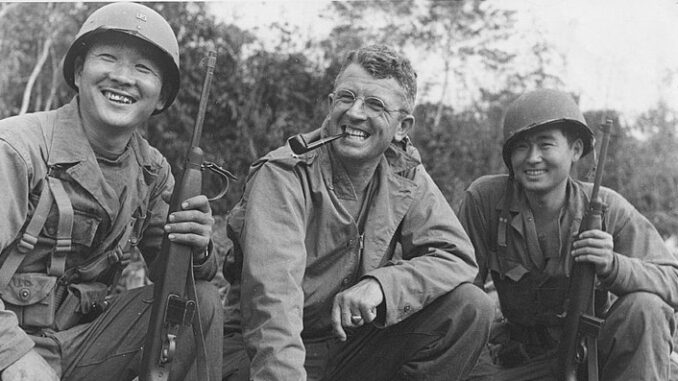
In August 1943, a top secret conference was held in Quebec, Canada, attended by British Prime Minister Winston Churchill, US President Franklin D. Roosevelt, and Canadian Prime Minister William Lyon Mackenzie King. One decision that came out of the First Quebec Conference (code name Quadrant) was to create an American jungle force which would go deep behind enemy lines in Burma to create as much havoc and disruption as possible for the Imperial Japanese Army, which held the territory. The long-range penetration force would consist entirely of volunteers. Approximately 970 came from US-based Army Ground Forces, another 960 from Caribbean Defense Command: these volunteers were already trained in jungle warfare but lacked combat experience. South Pacific Command provided 674 combat veterans of Guadalcanal and the Solomon Islands. Southwest Pacific Command provided 274 combat veterans of the Bougainville and New Guinea campaigns. A small number of men with Pacific theatre combat experience volunteered for the job in exchange for a “get out of jail, free” card – they were stockade prisoners who had gotten themselves into trouble, one way or another. (Within the unit, they were known as “The Dead End Kids”). In total, there were close to 3,000 officers and men transferred to the new jungle operations unit.
Arriving Bombay, India, 31 October 1943, they trained for two months before embarking by railroad to Deogarh, Madhya Pradesh, where they trained intensively for two more months. A group of visiting war correspondents, dissatisfied with the unimaginative and forgettable name “5307th Composite Unit (Provisional)”, took it upon themselves to come up with a catchy and flashy name for the unit. James R. Shepley, of Time magazine, invented “Merrill’s Marauders” which captured the public’s imagination.
On 24 February 1944, organized into three battalions of two combat teams each, the Marauders began a 1,000 mile march across the Patkai mountains and into the Japanese-held Burmese jungle, with mules and horses carrying most of their gear and supplies. They were equipped with mortars and light machine guns, as well as small arms. Possibly more valuable than weapons, the Marauders also included fourteen Japanese-American translators from the Military Intelligence Service.
Despite being outnumbered and constantly on the move in enemy territory, over the next several months Merrill’s Marauders ravaged Japanese forces, upsetting communications and supply lines, ambushing Japanese patrols, and attacking rear bases. While the Marauders suffered losses to enemy action, by a five to one ratio the greatest threats were exhaustion, malnutrition, illness, and diseases including malaria, amoebic dysentery, and scrub typhus. After five months of jungle combat only about two hundred of Merrill’s original men were still fit for battle.
Galahad was a success insofar as it accomplished the desired goal of keeping the Japanese army in Burma off-balance and ineffective.
Question of the Night: What amazing plans do you have for the weekend?
